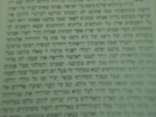In I got It!
Their Language is Different from All Nations
The Holy Tongue, which is spoken by the Jews, is the world's most ancient language, as it was in this language the Torah was written prior to the creation of the world. However, the Holy Tongue as it appears in the Torah is not used in its original form in the Hebrew language of today.
The tongue of the written Bible serves as the basis for the Modern Hebrew grammar, though the structure of the verb and certain formations are different. Hence, the word "tishmor" (save), for example, is in the Future Tense in Modern Hebrew, but is an imperative in the language of the Bible. Certain additions to words which can be frequently seen in the Bible, like the suffixes "mo" (his-), as in "shineimo" – 'his teeth', and "un" (extension of verb), as in "yanusun" – 'they will flee', are not used in Modern Hebrew at all.
The tongue of the Sages was heavily influenced by foreign languages, such as Aramaic, which in turn set its impressions in Modern Hebrew as well.
Modern Hebrew is directly influenced by other languages, as well. One example is Yiddish, which is based on German, from where certain word-forms were derived, like the words "beit cholim" (hospital) and "iton" (newspaper).
As of today, Hebrew is the mother tongue of 3,500,000 people, and is spoken by an additional 3,500,000, thus totaling 7,000,000 people.
Hebrew is considered one of the Semitic languages which originate from Shem, the son of Noah. One of the many characteristics of the Semitic languages is the writing from right to left, as opposed to most other languages in the world.







